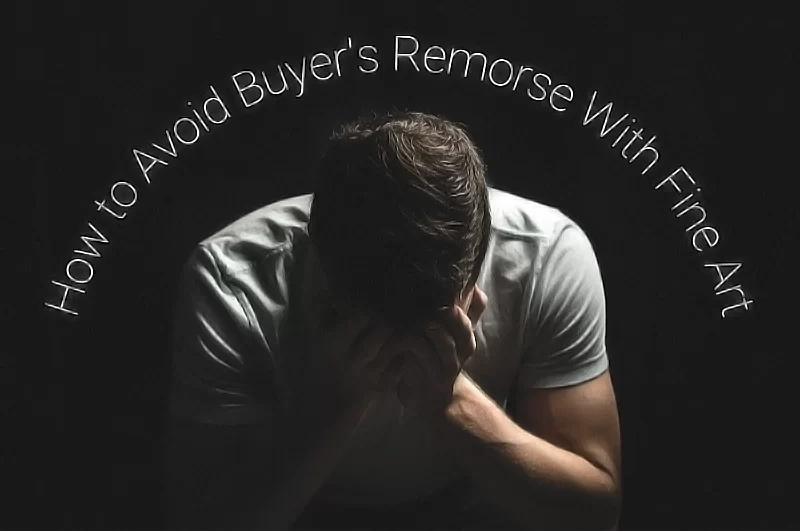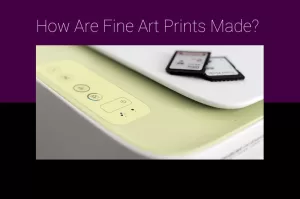How to Avoid Buyer's Remorse With Fine Art
Shop

Have you ever bought something which you later regretted? We all have at some point. Sometimes it’s easy to get a refund. Sometimes not. Fine art shouldn’t be one of those purchases that you regret in the morning. There’s a couple ways to make sure that you don’t ever have to worry about the problem of buyer’s remorse.

Avoid Buyer’s Remorse by Planning to Buy Fine Art Like You Would Any Other Big Ticket Item

When it comes to fine art, there’s usually a huge price tag attached. It’s a part of the industry. The art worth having usually has the highest price tags of all. This means that you need to plan and budget for a fine art purchase almost like you would plan for buying a new major appliance. (For more on budgeting for fine art, check out this article.)
While you can’t research reliability standards with fine art, you can check out the artist’s reputation along with insurance prices and maintenance requirements. These facts and figures will give you a good idea of what you are getting yourself into with buying fine art. They can also help you avoid some potential pitfalls in the fine art market.
You should also go in prepared to shop. This means to look around at lots of different options in your price range. Don’t be afraid to stick to your price range if money is an issue for you. If not, then you might want to be more flexible with your price range. There will be something out there which you will like and can afford. You might have to do a lot of shopping to find it though. Just don’t burn yourself out shopping for fine art. That’s not worth it.
 Be prepared to say ‘no’ and walk away. When it comes to buying fine art, there’s not a lot of room for negotiating price. The artist or gallery set a certain price and will probably stick to it. You’re dealing with what someone believes what their time and effort is worth. It’s emotional and won’t easily be overridden by a lower price offer no matter how guaranteed the offer is. In that, buying fine art is a bit like buying or selling a house: the seller might take your lower offer but be prepared for a ‘no’.
Be prepared to say ‘no’ and walk away. When it comes to buying fine art, there’s not a lot of room for negotiating price. The artist or gallery set a certain price and will probably stick to it. You’re dealing with what someone believes what their time and effort is worth. It’s emotional and won’t easily be overridden by a lower price offer no matter how guaranteed the offer is. In that, buying fine art is a bit like buying or selling a house: the seller might take your lower offer but be prepared for a ‘no’.
Make sure that the fine art piece you choose will work with the area you want to display it in. Vincent Van Gogh’s “Starry Night” might be one of the most famous and expensive pieces of fine art out there and look amazing on its own. However, depending on your home decor, it might look terrible next to your couch or on your color of wall paint. Buying fine art which doesn’t work with your existing decor is a big reason for buyer’s remorse.
Have Enough Money That Buying Expensive Fine Art Isn’t a Problem

The other solution to avoiding buyer’s remorse with fine art is to simply have enough money that a large purchase like that doesn’t affect your pocket. If this is you, then you’re all set. However, since this is not a large segment of the population, the solution above will most likely be your best path to avoid buyer’s remorse.
For those who do have exceedingly large amounts of money to work with, your rules are a bit different from those of the average population. Since you can drop a couple thousand dollars into a purchase and not feel it, buying fine art will be more of a whim to you. However, you will still feel buyer’s remorse if you don’t have a good place to display your fine art purchase.
Your home will likely be larger than most so space for you isn’t so much of a problem. Matching the fine art with your decor will still be a problem for you. Remember to take stock of what your current furniture and decorations look like before you buy fine art. This will help you properly enjoy your new purchase. It won’t detract or distract from the space. Your new fine art will be a welcome addition to your home.
Conclusion
Avoiding buyer’s remorse and regret with buying fine art is about planning and preparing. If you’re ready to buy new fine art for your home, take some time to properly prepare yourself with information and take the time to make sure you will be satisfied before you spend money. This will ensure that you buy the right fine art for your home and don’t go broke doing so.
Best Sellers
Cramer Imaging Newsletter

Receive monthly updates in your inbox from us.





